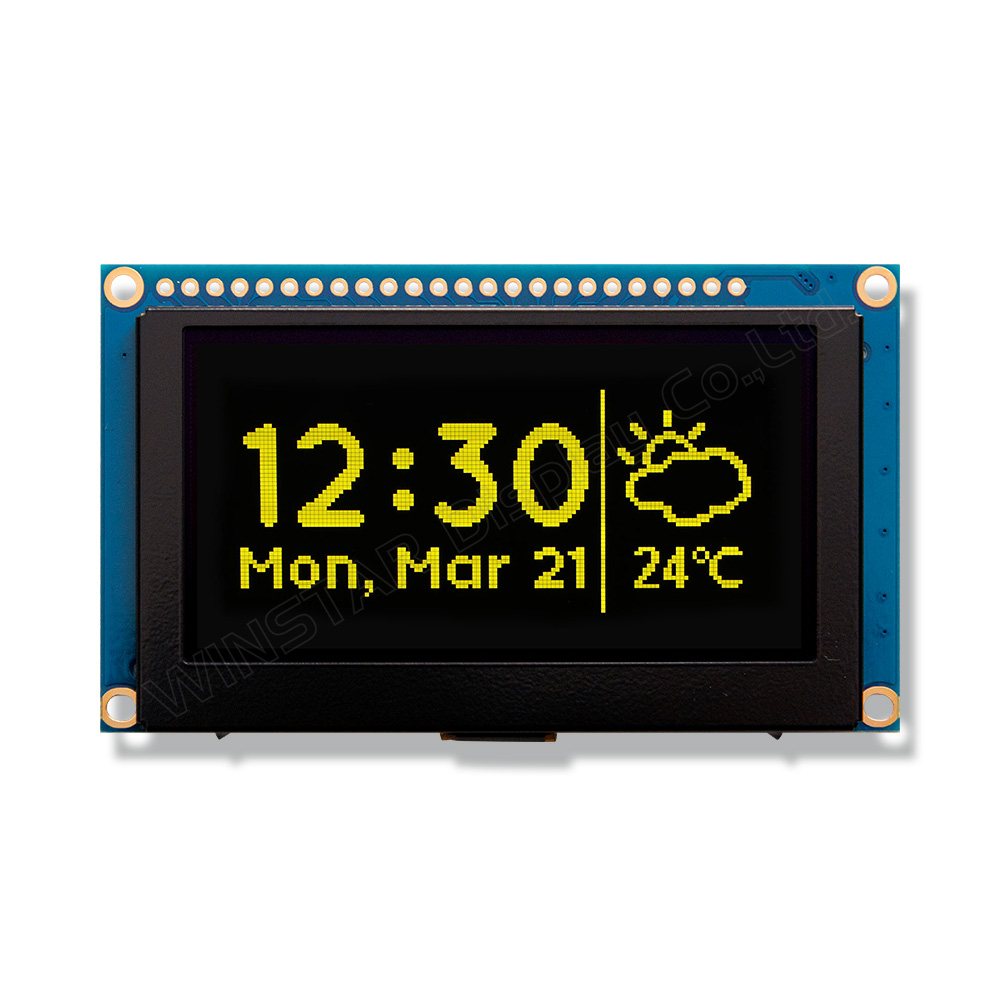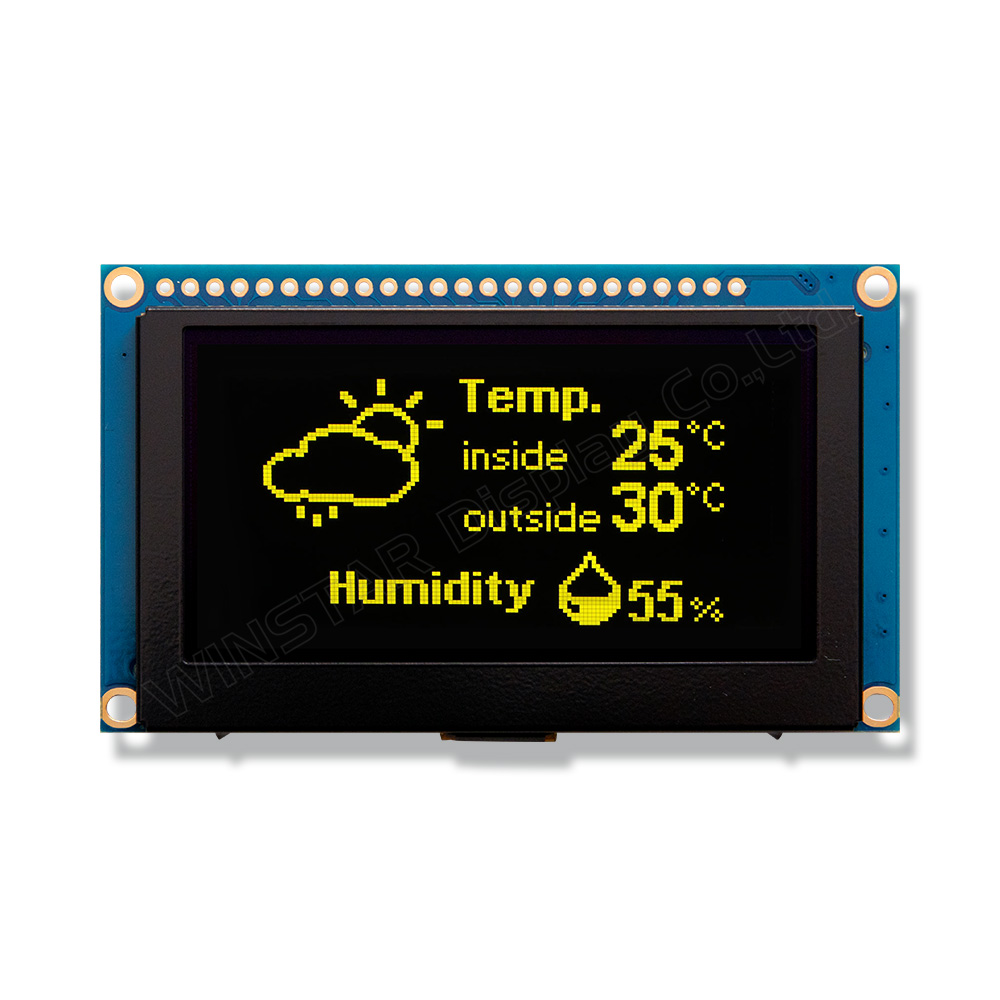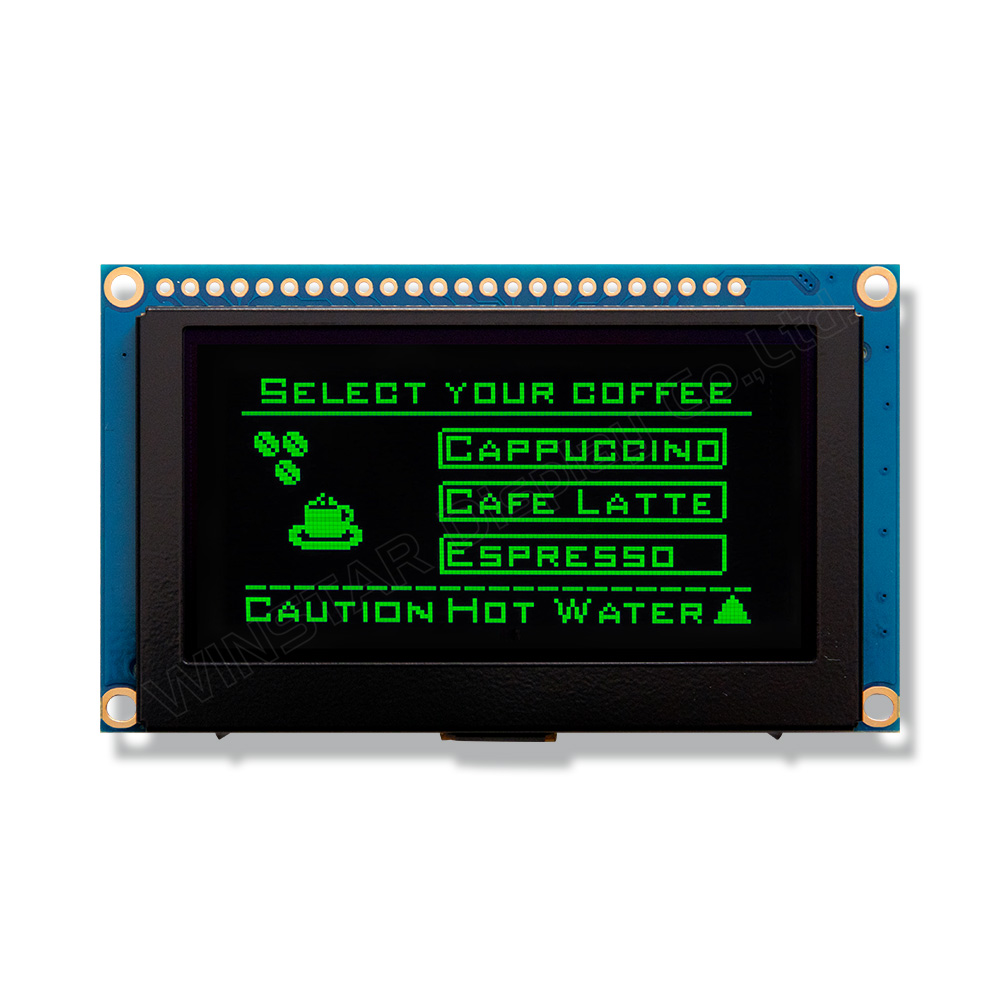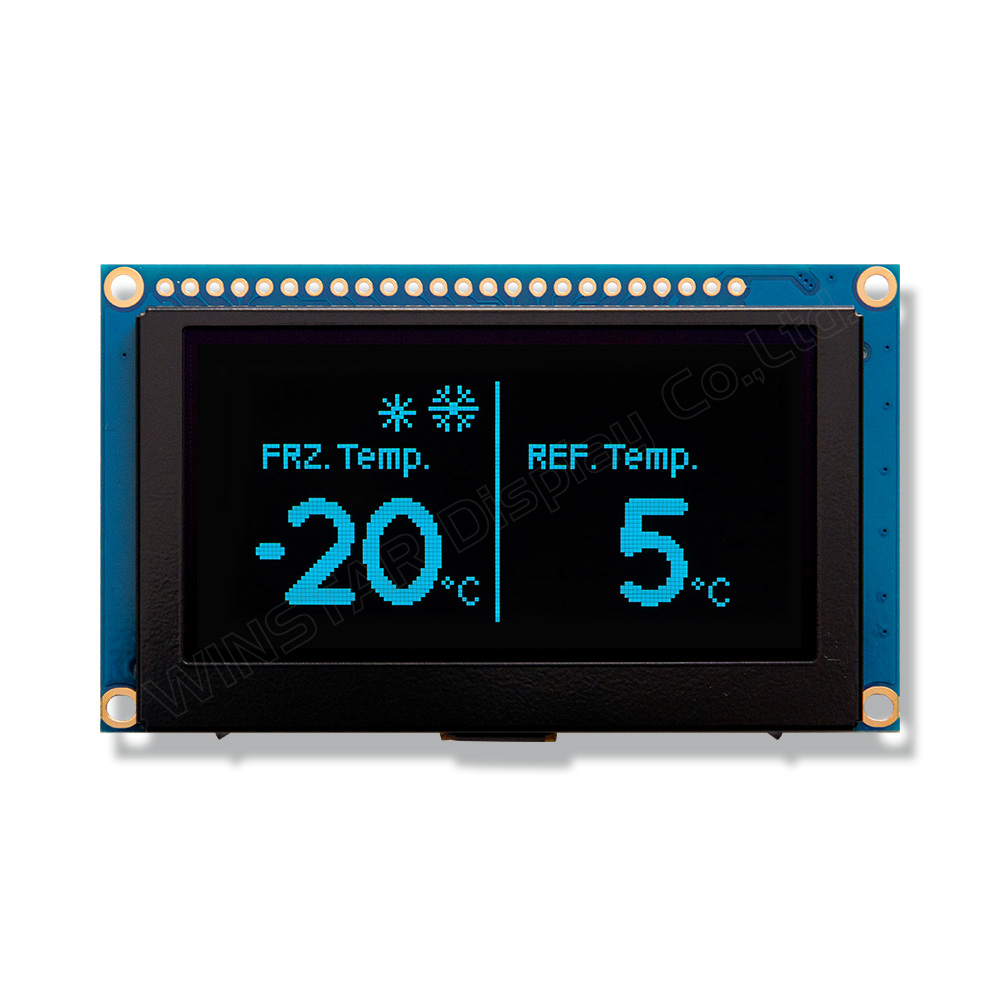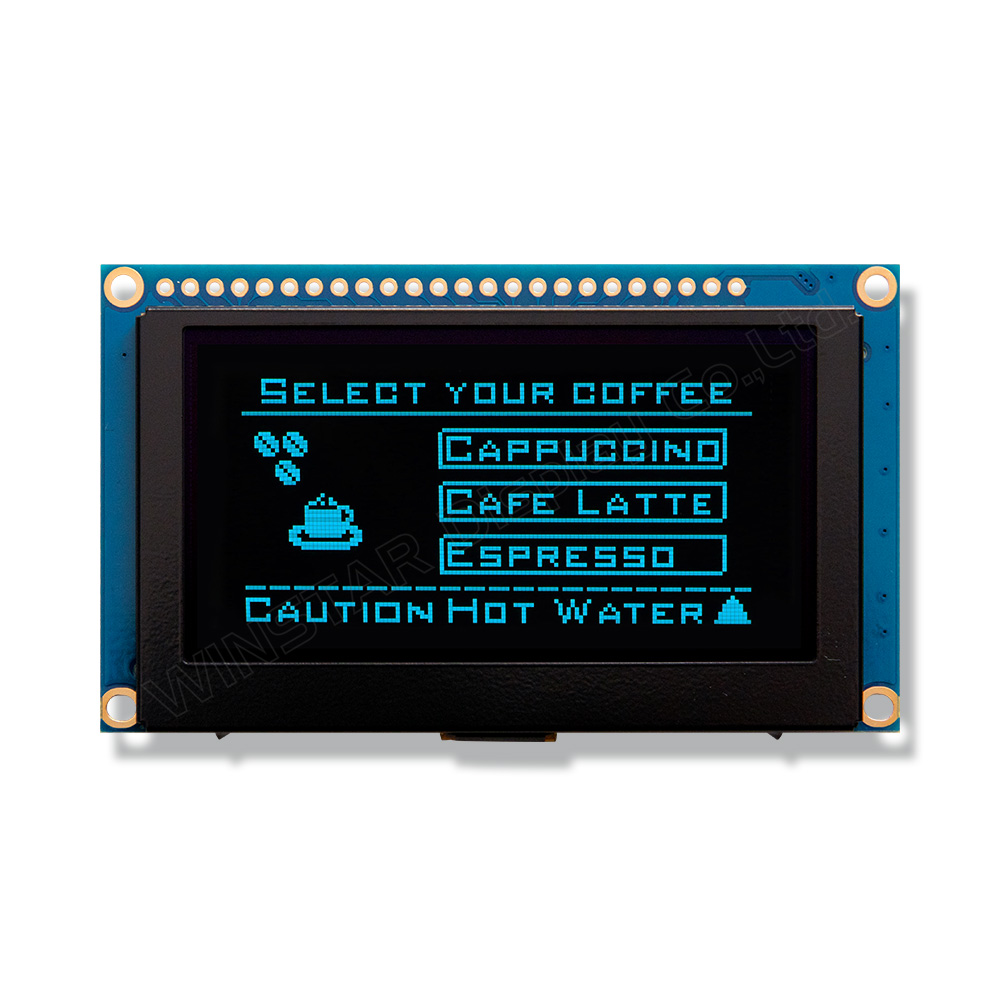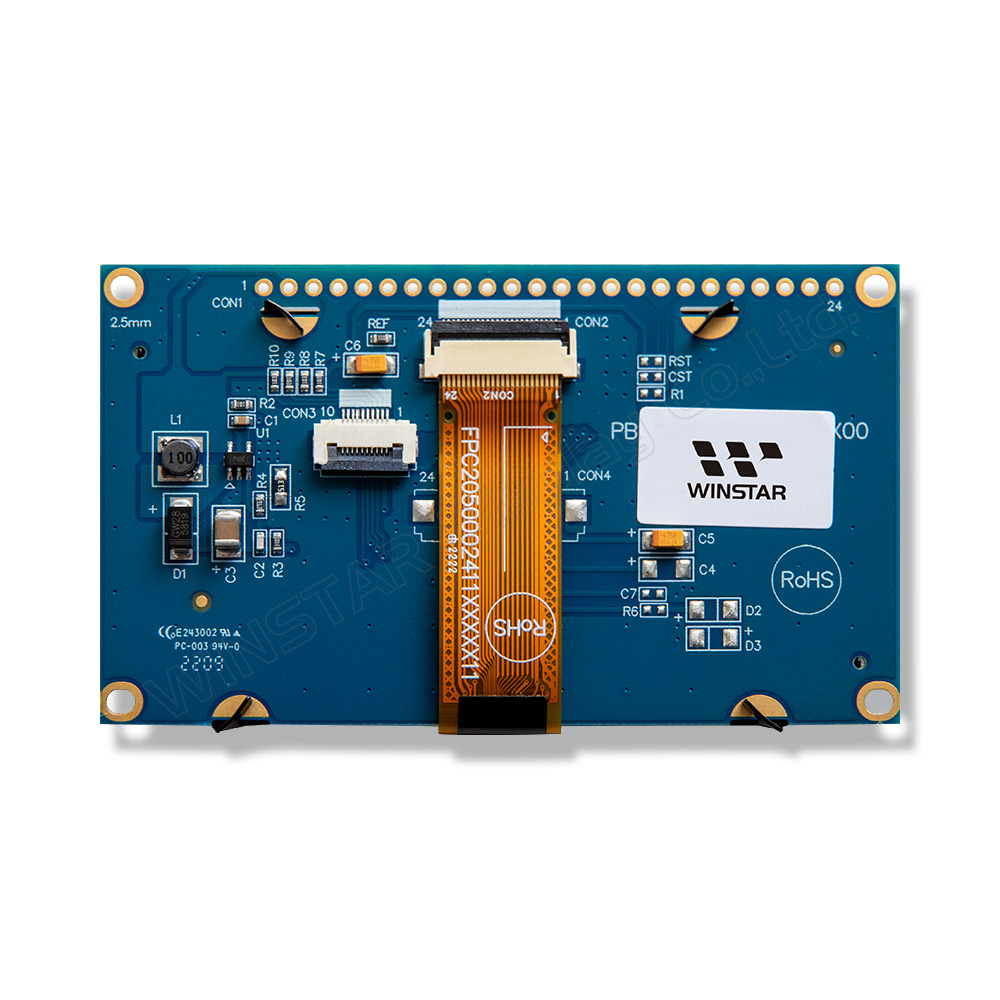Die WEP012864Q-Serie ist ein 2,7-Zoll monochromatischer COG OLED-Grafikdisplay mit einer Auflösung von 128x64 Pixeln. Es integriert den SSD1309-Controller-IC und unterstützt die Kommunikation über 6800 8-Bit und 8080 8-Bit Parallel, I2C und 4-Draht-SPI-Serienschnittstellen unter Verwendung eines 3V-Treibers. Die Modulabmessungen des WEP012864Q betragen 82,0 × 47,5 mm, mit einer aktiven Fläche von 61,41 × 30,69 mm. Diese Serie teilt dasselbe OLED-Panel wie das WEO012864Q und das WEF012864Q.
Das WEO012864Q zeichnet sich durch ein rahmenloses Design aus und enthält keine Leiterplatte (PCB).
Das WEF012864Q verfügt über einen Rahmen mit vier Schraubenlöchern für zusätzliche strukturelle Stabilität.
Das WEP012864Q unterscheidet sich dadurch, dass es sowohl einen Rahmen als auch eine Leiterplatte (PCB) hat, wobei vier Schraubenlöcher in die Leiterplatte für eine einfache Installation eingearbeitet sind.
Diese drei Varianten erfüllen unterschiedliche Anforderungen und bieten Optionen für vielfältige Designüberlegungen und Installationspräferenzen.
Wenn eine CTP-Touch-Funktionalität erforderlich ist, erwägen Sie das Modell WEP012864Q-CTP innerhalb dieser Serie.
Die WEP012864Q-Serie ist ein COG-Struktur-OLED-Display; dieses OLED-Modul ist leicht, energieeffizient, sehr dünn und weist ein hohes Kontrastverhältnis von 10.000:1 auf. Es eignet sich für Wand-/Messgeräte, Anwendungen im Haushalt, POS-Systeme, Cloud/IoT-Systeme, intelligente Technologiegeräte, Energiesysteme, Kommunikationssysteme, medizinische Instrumente usw.
Das WEF012864Q-OLED-Modul kann bei Temperaturen von -40°C bis +80°C betrieben werden, wobei die Lagertemperaturen von -40°C bis +80°C reichen.



